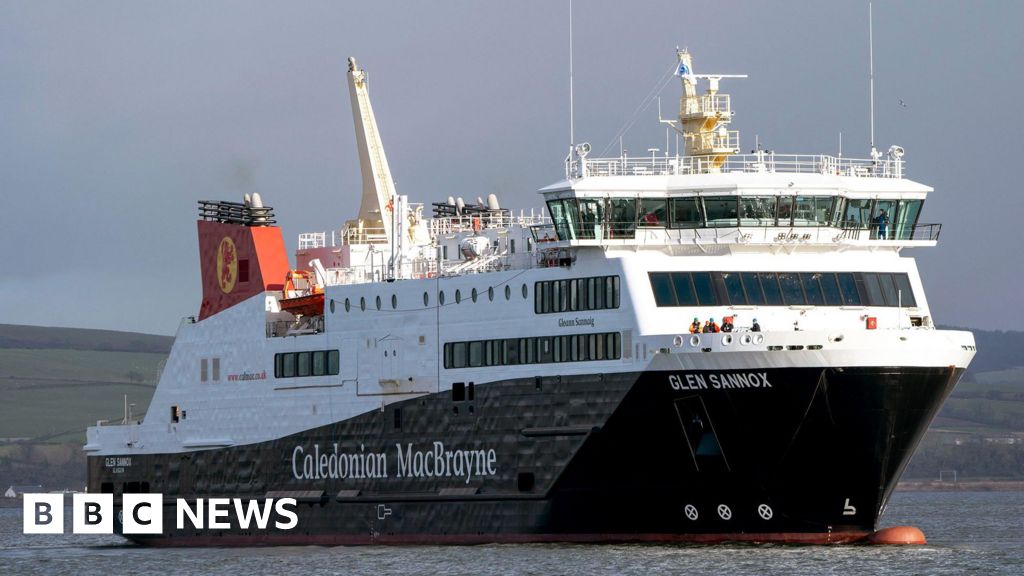‘Green’ ferry has higher emissions than diesel ship
Glen Sannox: A Ferry with a Heavy Carbon Footprint

The MV Glen Sannox, a new dual-fuel ferry set to serve the Arran route in Scotland, has raised concerns about its environmental impact. Despite being marketed as a “green” vessel, an emissions analysis reveals that its carbon footprint will be significantly larger than that of the older MV Caledonian Isles. This article delves into the reasons behind the increased emissions and explores potential alternatives for greener ferry operations in Scotland.
Understanding the Carbon Footprint of Glen Sannox
The Glen Sannox is designed to carry more vehicles than its predecessor, but this increased capacity comes with a cost. According to an emissions analysis conducted by CalMac, the ferry will emit approximately 10,391 equivalent tonnes of CO2 annually. In contrast, the Caledonian Isles produces about 7,732 tonnes of CO2 each year. The larger engines required for the Glen Sannox not only consume more fuel but also emit methane, a potent greenhouse gas with a global warming potential far greater than CO2.
The ferry’s size and the type of fuel it uses contribute significantly to its carbon footprint. While liquefied natural gas (LNG) is often touted as a cleaner alternative to diesel, experts argue that its environmental benefits are overstated. Professor Tristan Smith from University College London points out that when considering the upstream carbon costs of importing LNG from Qatar, the emissions associated with Glen Sannox may be worse than if it were powered by diesel. The complexity of the LNG technology also adds to the challenges, as the shipyard faced numerous engineering hurdles during its construction.
Moreover, the Glen Sannox cannot dock at the usual mainland harbor in Ardrossan without significant redevelopment, further complicating its operational efficiency. While it will increase car capacity and reduce certain air pollutants, the overall greenhouse gas emissions remain a concern. The analysis suggests that the benefits of using LNG are minimal, raising questions about the true environmental impact of this new ferry.
The Debate: Is Diesel a Better Option?
The emissions analysis conducted by CalMac may not fully capture the Glen Sannox’s carbon footprint. The figures are based on ideal engine conditions, which may not reflect real-world operations. Additionally, the analysis does not account for “blowdown” emissions of methane that occur when switching from LNG to marine gas oil (MGO). These emissions could further inflate the carbon footprint of the ferry.
Tankers: Diesel Trade Landscape Changed After Surge in Russian Diesel Imports
Environmentalists argue that a comprehensive assessment, including “upstream emissions” from gas extraction and transportation, is essential for a realistic evaluation of the ferry’s environmental impact. Critics assert that ignoring these factors is akin to “rearranging deck chairs on the Titanic” when urgent action is needed to achieve zero emissions.
Interestingly, some experts suggest that running the Glen Sannox on diesel might be a more environmentally friendly option. While LNG is marketed as a cleaner fuel, the reality is that its production and transportation can result in significant emissions. The debate continues as stakeholders weigh the pros and cons of different fuel sources for ferry operations.
Exploring Greener Alternatives for Scotland’s Ferries
To address the environmental concerns surrounding the Glen Sannox, Scotland could explore alternative fuel sources. One promising option is biogas, which can be produced from organic waste. This fuel is considered carbon neutral, as the carbon dioxide released during combustion originates from the atmosphere rather than fossil fuels. However, developing the necessary infrastructure for biogas production would require substantial investment.
Another viable option is the use of catamarans, which are generally more fuel-efficient than traditional single-hulled ships. The MV Alfred, a chartered catamaran operating on the Arran route, has demonstrated low fuel consumption and environmental benefits. As battery technology advances, there is potential for all-electric ferries to service many of Scotland’s routes, provided that the necessary electrical infrastructure is upgraded.
